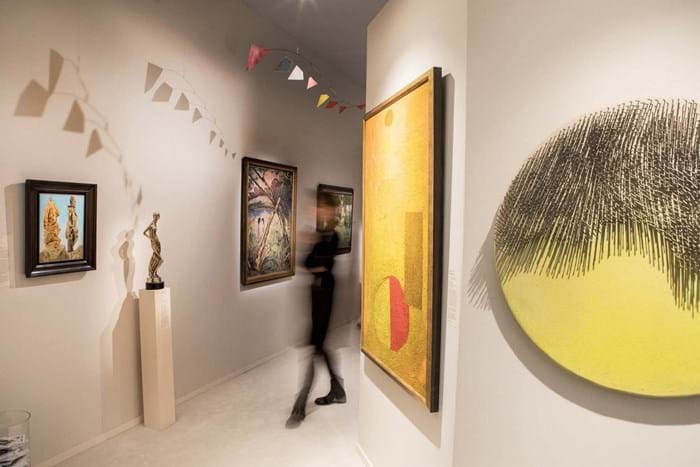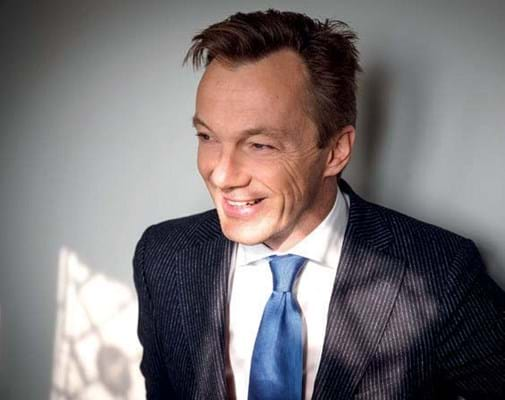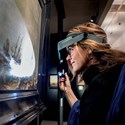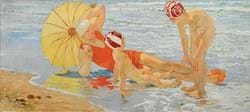TEFAF Maastricht returns this year bigger and more international than ever, featuring 285 exhibitors from 22 countries. In the grand scheme of things, it may seem an incremental increase – last year the fair featured 279 from 21 countries – but the ongoing changes at the event are signs of work, sacrifice and the organiser’s commitment to keeping current.
This is the 33rd edition of the fair, which runs from March 7-15 (plus two preview days on the 5th and 6th) in the small southern Dutch town. It launched as a relatively provincial Old Masters event, Pictura Art Fair, in 1975. Its spot now as one of the acknowledged leaders on the international fair calendar is the result of years of work and multiple reinventions.
‘The Davos of art’
“When it started it was 80% Dutch and now it’s the most important international art fair. Our reputation is strong. It’s the Davos of art,” says Patrick van Maris van Dijk, outgoing CEO of the brand.
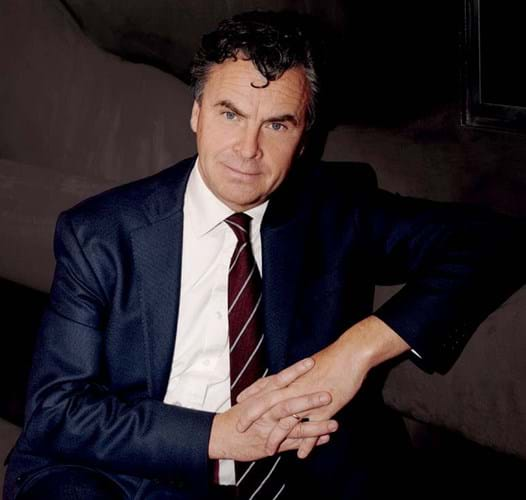
Patrick van Maris, outgoing CEO of TEFAF. He steps down this spring after five years, and TEFAF’s Sofie Scheerlinck will take up the position as managing director. Van Maris told ATG he plans to spend the next six-12 months on sabbatical. Photo by Bodine Koopmans.
For five years he has worked on “calibrating” the event and the dealerships represented there to suit modern tastes. Significant for him this year are the six new design dealerships (including Friedman Benda, and Galerie Lefebvre) and, for the first time, an exhibitor from India, BHAGAT, specialising in Contemporary jewellery. Meanwhile, British representation remains highest, with 76 dealers from the UK, whereas 22 are from the Netherlands.
The interest in balance also reflects the fair’s growing emphasis on cross-collecting, which is most evident in the New York fairs where stand-sharing is on the rise. Van Maris says it is also important in Maastricht: “Collectors come to look for a certain category, but after a couple of hours or a couple of days they go elsewhere. The dealers really value that diversity. They find that they meet new collectors that way.”
The most obvious change for this staging is the loss of the event’s usual loan exhibition and one of its restaurants (fear not, hungry visitors, there are plenty more to choose from) to accommodate the extra exhibitor stands.
“We are very privileged. Because we are so popular, we have a long waiting list but limited space,” van Maris adds.
“These are tough decisions. We’ve always had a loan exhibition, but the pressure from the participants is to allow more people in.”
Annual applications
Although the total number of stands is up by just six at this staging, there are 25 newcomers in all, meaning disappointment behind the scenes for some would-be-returning exhibitors. Since 2016, every participant has been required to apply for their spot annually, leading to some grumbling from old-guard attendees.
However, van Maris is adamant that this system preserves the “core mission of TEFAF”: to present “the best art in all the disciplines we offer and that all the offerings are good quality and well-vetted”.
Global recognition
Exhibitors are divided into eight sections (Ancient Art, Antiques, Design, La Haute Joaillerie, Modern Art, Paintings, Tribal Art and Works on Paper). Attendees include galleries as globally recognised as the event itself. Among those attending this year are Symbolic & Chase, Adrian Sassoon, Colnaghi and Agnews.
Van Maris steps down from his post this spring after five years and tells ATG that during his tenure he has accomplished everything he set out to do with the brand.
He lists the globalisation of the name, including the introduction of two TEFAF New Yorks, and the strengthening of the Modern section as among his most pleasing achievements.
Another of the most important changes under van Maris was last year’s change in the global vetting policy, which removed all trade members from vetting committees. Though trade members – who are often leading international specialists in their field – may be applied to for professional opinions, none are now voting members.
Global chairman of vetting for TEFAF is Wim Pijbes, who says that the committees, much like the vetters, shift to suit the requirements of the fair.
Though he adds that this year won’t rival the “radical change” of the last Maastricht staging – which brought in 52 new vetters – there are still 28 newcomers in the 187 committee members.
Younger focus
“It’s a process of getting the right specialists in each field,” he says. “This year lots of changes have been made. We wanted some younger people. The committees have been stable for many years and now that the fair is more modern you have to change your committees to fit.”
Pijbes welcomes the fair’s increasingly global profile, adding that it will go as far as necessary to acquire the best vetters. It is all part of a larger trend, he adds.
“In the last few years the art world has become more and more global – Art Basel is in Hong Kong, Frieze is now in Los Angeles, Paris Photo is in New York and TEFAF is in New York too. We reached another high-calibre audience there.
“There are new galleries coming in with different types of objects. It all comes together in a higher standard.”
Even without the dramatic changes of previous TEFAF Maastrichts the commitment to creating a great event remains clear. Bring on the fair.



